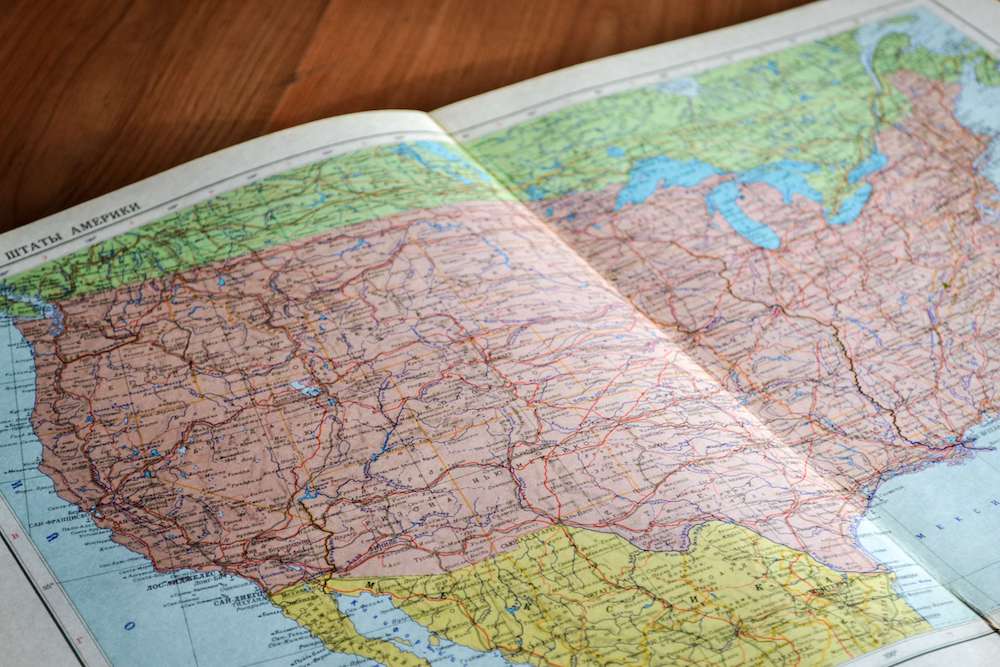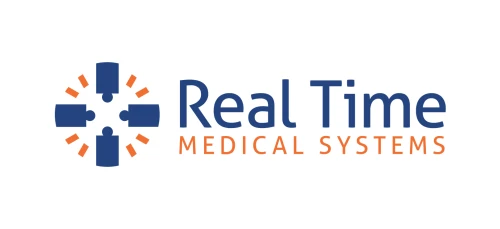The Onboarding Process: Guide to Building a New Hire Program
Everything you need to create a successful new hire onboarding process – both in-person and remote!

Table of Contents
Chapter 1
Introduction
Chapter 2
Onboarding Basics [+Checklist]
Chapter 3
Gathering Onboarding Documentation
Chapter 4
Creating a 90-Day Onboarding Plan
Chapter 5
Harnessing the Power of Onboarding Videos
Chapter 6
How to Rehire an Employee
Chapter 7
Onboarding Executive Team Members
Chapter 8
State Onboarding Guides
Chapter 9
Automating New Hire Onboarding
Chapter 10
Cost-Per-Hire Metrics
Chapter 11
Onboarding & HR Statistics

Chapter 1
Introduction
Why the Onboarding Process is Crucial for Your Business
Picture this: You've hired your dream employee who aced the interview and can't wait to start. They show up on the first day, and...crickets. No one seemed to know they were coming. They spend hours filling out paperwork and feel like a lonely stranger in a new place.
It costs an average of $4,000 to hire and onboard a new employee
Unfortunately, this isn't just a hypothetical scenario – 30% of organizations practice "passive onboarding," where compliance issues are covered but not culture or connection-related topics.
A new employee's first impression of your company is crucial, and it's up to you to ensure it's positive. That's where an effective employee onboarding process comes in. A well-designed onboarding program leads to happier, more engaged employees who are more likely to stay long-term.
Organizations with a strong onboarding process improve new-hire retention by 82%. But only 12% of employees feel that their company does a great job onboarding new hires!
Only 12% of new hires feel their company does a great job onboarding.
You need to have a great new employee experience. In this comprehensive guide, we'll explain everything you need to know about onboarding new employees, including the benefits of a formal onboarding process and the steps to create a custom onboarding program.

Chapter 2
Onboarding Basics [+Checklist]
An effective employee onboarding process is vital to ensuring your new employees' success and fostering a positive first impression of your company. As an HR professional, it's your responsibility to create an onboarding experience that leaves a lasting impression, and we're here to help guide you through that process.
Why Employee Onboarding Matters
Onboarding is more than just a formality; it's a strategic process that impacts employee engagement, productivity, and retention. Statistics show that organizations with a strong onboarding process improve new-hire retention by 82%. On the contrary, employees with a negative onboarding experience are twice as likely to seek other opportunities soon. Hence, it's crucial to get it right.
HR professionals know that first impressions matter, and that's why onboarding is a crucial aspect of every organization. This comprehensive guide provides information on employee onboarding, including best practices, common mistakes to avoid, and tips for ensuring a successful process.
Understanding Employee Onboarding
Employee onboarding is the process of integrating new employees into the company. It involves introducing them to their job duties, the team, and the company culture. A successful onboarding program should incorporate the following:
A rundown of the company's history, philosophy, and mission statement.
A thorough overview of the employee's job duties and expectations.
Providing necessary resources for the employee's role.
Introduction to team members and opportunities to shadow experienced employees.
The 3 Phases of Onboarding
We'll break the onboarding process into three phases: Preboarding, Actual Onboarding, and Follow-Up.
Phase 1: Preboarding
Preboarding starts before the employee's first day. It includes administrative tasks like sending the employee handbook, setting up their email account, and introducing them to their supervisor. Other key steps include:
Creating an Onboarding Program with Goal Tracking.
Sending a special offer letter.
Collecting personal information.
Providing links to the company's online assets.
Previewing the benefits package.
Collecting withholding and payroll information.
Completing the I-9 form.
Running a background check.
Setting up an email account.
Sending a welcome email.
Sending a new hire swag welcome kit.
Phase 2: Onboarding
This phase is where the real work begins. It involves an office tour, introducing company culture and values, and goal-setting. Critical steps in this phase include:
Scheduling a Remote/Hybrid Employee Orientation Session.
Inviting employees to select their benefits.
Introducing the training schedule.
Giving your new hire a tour.
Taking your new team member out to lunch.
Scheduling an HR Orientation.
Giving employees a "Review Period."
Phase 3: Follow-Up and Career Development
The follow-up stage involves ensuring that the new employee is adjusting well. This includes regular check-ins, additional training, or support if needed. Critical steps in this phase include:
Setting up check-ins.
Sending out a quick survey about their onboarding experience.
Following through with your promises.
In our 2024 onboarding checklist, we explain the three onboarding phases and offer key points for each to create the ultimate onboarding checklist.
What you’ll learn:
The importance of employee onboarding
The three phases of onboarding and their key points
Best practices for in-person and remote employee onboarding
Tips for ensuring a successful process
Common mistakes to avoid during the onboarding process

Chapter 3
Gathering Onboarding Documentation
When a company hires a new employee, the paperwork process is essential for classifying and compensating them. It's also an amazing opportunity to introduce the new hire to your company culture.
There are a number of forms that must be included in a new hire package, such as:
Form W-4
Form I-9 Employment Eligibility Verification
State tax withholding forms
Equal Opportunity Data Form
Employee Benefits Documents
It's also crucial to ensure compliance with state and national employment laws.
Read our article New Hire Paperwork & Employee Onboarding Forms to learn:
The importance of creating a new hire package.
The mandatory federal and state new hire forms, such as Form W-4, Form I-9, and Equal Opportunity Data Form.
The employee benefits documents that should be included in the new hire package, such as health insurance, life insurance, retirement plans, stock options, etc.
The significance of maintaining compliance with state and national employment laws.

Chapter 4
Creating a 90-Day Onboarding Plan
A recent study found that 69% of employees are likelier to stay with a company for three years or more if they have had a positive onboarding experience. Poor onboarding leads to low morale, poor job performance, and high turnover rates. That's why it's essential to create a comprehensive 30-60-90-day onboarding plan
Onboarding is a critical process to ensure that new hires are acclimated to the company's culture and perform their job well. A 30-60-90-day plan can set you and your new employees up for the best possible onboarding process.
Your plan should include the following:
Introductions
Company culture
Job training
Performance evaluation
In our article Creating a 90-Day Onboarding Plan For New Hires, we cover:
The key elements to include in a 30-60-90-day-day onboarding plan
The three steps to create a 90-day framework
Twelve ways to personalize each employee's plan

Chapter 5
Harnessing the Power of Onboarding Videos
Onboarding is critical for new hires, acquainting them with company culture, policies, and the overall work environment. A tool that has proven particularly effective for this task is the employee onboarding video, which communicates core company values and provides a glimpse of what to expect.
Traditionally, HR showcases these videos during orientation sessions in a boardroom setting. However, they have also emerged as critical instruments for remote employee onboarding, especially given the rise of work-from-home trends.
Key Elements and Tips for Creating Onboarding Videos
Creating a compelling onboarding video involves several key elements, such as a brief company overview, an introduction of the team, an outline of the job, and a depiction of the daily routine and benefits of working for the company. Some expert tips include:
Developing a unique idea that aligns with your company's personality and culture.
Communicating your core values to introduce new hires to your company culture.
Conveying a purpose relevant to the new employee, including job descriptions and expectations.
Ending on an optimistic note to create a positive first impression and make the new hire's first week memorable.
Tools for Creating Onboarding Videos
Although creating videos may seem challenging, there are several tools available that simplify the process:
Your Smartphone: Modern smartphones possess high-quality cameras and numerous apps that can help create top-notch videos.
Biteable: This tool offers a drag-and-drop timeline function with a fast preview and publishing setting, enabling the easy creation of engaging videos.
PowerPoint: PowerPoint can convert slideshows into videos, which you can enhance with voiceovers and background music.
Onboarding videos are essential to the employee onboarding process and significantly improve the recruitment process. However, addressing other key factors, like new hire paperwork, access to training material, and fostering a sense of belonging, is also crucial.
See the full Onboarding Video Guide for examples.

Chapter 6
How to Rehire an Employee
According to recent data, 27-29% of employees were rehired by their former employer in 2021. Some experts say that rehiring these so called "boomerang employees" is one of the biggest new work trends.
Rehiring employees has a lot of benefits, such as higher retention rates and expedited onboarding. There are also several factors to consider before rehiring an employee, including their eligibility, previous experience with the organization, and compensation.
Read our article How to Rehire an Employee to learn:
The benefits of rehiring an employee
Factors to consider before rehiring
An overview of the process of rehiring an employee
Common mistakes to avoid when rehiring an employee

Chapter 7
Onboarding Executive Team Members
An executive onboarding strategy helps new executives and managers assimilate into their new company, team, and culture. It helps the new leader understand the vision, mission, values, and goals of their new company.
You've probably read countless guides on how to onboard new hires, remote workers, and offshore staff. But have you ever thought about the onboarding process for executives and senior managers? New leaders are expected to jump right in and start performing at a high level from day one, but is that the best approach?
In our article Executive Onboarding Strategies: How to Set Management and Leadership Up For Success, we'll explore why more organizations should consider implementing executive onboarding strategies and what those strategies should entail. Key takeaways include:
How introduction to the organization's vision, mission, and culture gives new leadership a frame of reference for their work and helps them understand how their role contributes to the larger goal.
The process of getting executives acquainted with their new roles and responsibilities, understanding how the company is structured, and seeing how different teams work together.
The importance of understanding the dynamics of the new team and what drives each individual they will be managing.
Managing expectations from stakeholders across the organization and understanding who they are, how they work together, how to communicate, and more.

Chapter 8
State Onboarding Guides
Starting a new job or onboarding employees in your department can be a confusing and tedious process. It's even more daunting when you need to consider state-specific labor laws, compliance requirements, and paperwork.
Staying up-to-date on best practices for onboarding procedures — and, more importantly, how those policies differ from locale to locale — can be challenging and require an investment of both time and resources.
That's why we've compiled our state-specific onboarding guides with everything you need to know about individual state requirements before beginning the new hire process. With these step-by-step directions at hand, you're empowered to create tailored employee experiences that are easier and more efficient!

Chapter 9
Automating New Hire Onboarding
HR managers are struggling to keep up with their evolving responsibilities. One way that companies can help relieve some of this burden is by automating onboarding processes for newly hired employees.
The benefits of automating your new hire orientation include:
Making a flawless first impression
Staying consistent with every new employee
Eliminating messy and time-consuming paper-based processes
Reducing costs
In our article on automated onboarding, you'll find this simple three-step process for automating your new hire orientation:
Create a custom orientation checklist template
Start your new hire orientation workflow
Trigger alerts and view assignees and task completion status

Chapter 10
Cost-Per-Hire Metrics
Many companies are trying to find a way to cut costs and save money - especially in industries that were hit hard by the COVID-19 pandemic and the Great Resignation.
Do you know how much it really costs your company to hire a new employee? Cost-per-hire (CPH) metrics help you understand how to objectively evaluate your hiring costs and make data-driven decisions to improve your recruiting ROI.
In our guide to cost-per-hire metrics, you'll learn the following:
What cost-per-hire is and why it's important for businesses
The industry benchmarks for CPH
The formula for calculating CPH and its components
Additional CPH metrics, such as the Recruiting Cost Ratio (RCR)

Chapter 11
Onboarding & HR Statistics
Onboarding is often a dizzying experience with a whopping 54 activities to complete on average. That's enough to make your head spin! But here's the good news: organizations are turning to onboarding technology solutions to make the process speedier and smoother.
With automated software, new employees can breeze through the mountain of paperwork and forms. And here's another perk: a successful onboarding program can reduce employee turnover by up to 25%. No wonder businesses are getting serious about streamlining the process.
Here are a few more onboarding statistics you need to know:
It costs an average of $4,000 to hire and onboard a new employee.
Employees integrated with effective onboarding programs are 69% more likely to stay for at least three years.
30% of organizations are involved in "passive onboarding," where compliance issues are covered but not culture or connection-related topics.
Managers are 20% more satisfied with employees who have received formal onboarding training.
Each year, at least 25% of the US working population experiences a career transition.
Onboarding Stories
Search...
Product
GoCo
Resources
Articles
eBooks
Webinars
Customer Stories
Please fill your info to start experiencing GoCo
Please fill your info to start experiencing GoCo
Please fill your info to start experiencing GoCo
Please fill your info to start experiencing GoCo
Please fill your info to start experiencing GoCo
Please fill your info to start experiencing GoCo


